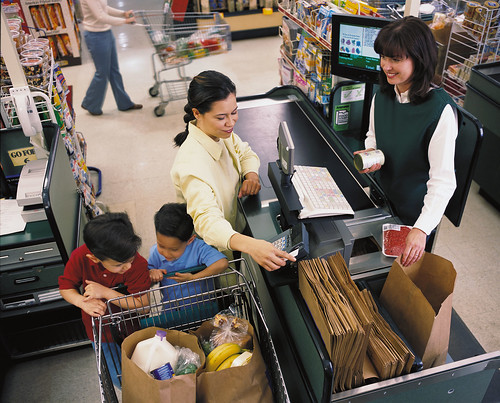USDA Publishes Guide to Help Corner Stores Sell Healthier Foods

A lady making purchases using her SNAP benefits (food stamps).
We all hear the recommendations on healthier eating and the advice we get from experts on health. But eating healthy is not as easy as simply following everything we hear from doctors and nutritionists. Sometimes, access to healthier food choices is limited by one’s neighborhood. Other times, the food choices for fresher and more nutritious items are simply not financially attainable. And in yet other cases, the barriers to healthier food choices can be something as simple as knowing where to look in your local store.
That’s where the Food and Nutrition Service of the USDA comes in — trying to improve the availability of healthier items for those we serve, without sacrificing taste. FNS is the federal agency in charge of running the SNAP program. And there’s no reason why SNAP recipients have to bear an inferior supply of healthy foods.
FNS continues expanding its information to Spanish-speaking individuals benefiting from our public assistance programs. In addition to our What’s Cooking website that contains hundreds of Spanish recipes for healthy and budget conscious dishes, we recently published a new Healthy Corner Store Guide. The same document is available in English.
The purpose of the publication is to educate small business owners small store owners on how to improve access and sales of healthy products. The Healthy Corner Stores Guide provides strategies for marketing healthier product options, sourcing healthy food and beverages, and making changes to the way food and beverage items are displayed. For example, stores could display healthier items at eye-level, near checkout counters, or by entryways, so they are visible when customers first enter the store.
Corner stores are more prevalent in low income communities. Low-income areas have significantly more as many convenience stores than higher income areas. Hispanic youth are more likely to attend schools with convenience stores and snack stores nearby. That’s why our agency is trying to focus on ways to improve the selection of fruits and vegetables, among other healthy choices. Corner stores tend to sell little fresh produce, whole grains, and low-fat dairy products. Proximity to convenience stores within a neighborhood is associated with higher rates of obesity and diabetes—diseases that disproportionately impact Latinos.
Given that Hispanics tend to make use of these types of stores, it’s our goal that those making purchases with their SNAP benefits are able to buy healthy foods for them and their families. We appreciate store owners who are taking the first steps in making this transformation a reality.
No comments:
Post a Comment